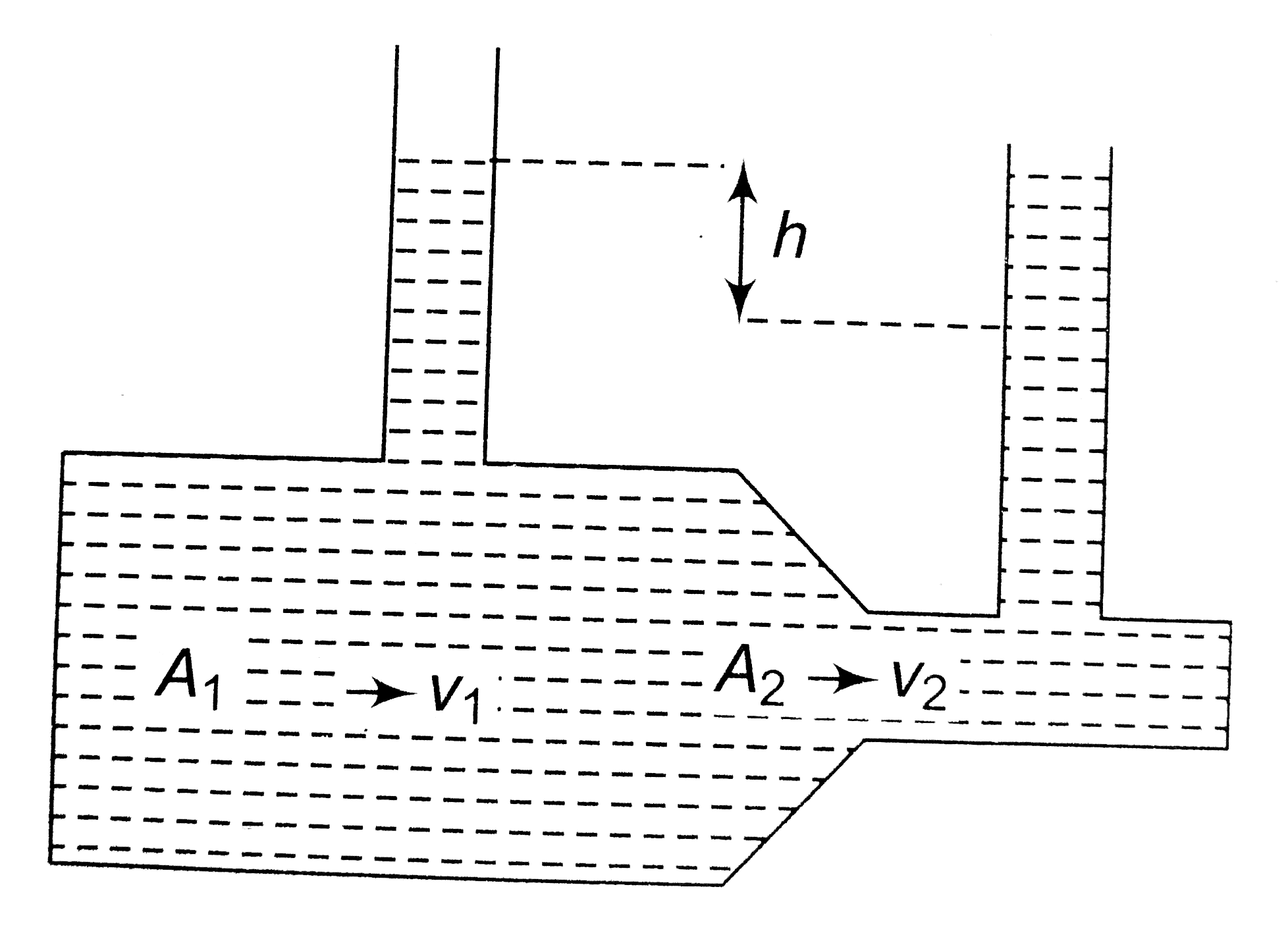Figure shows a liquid flowing through a tube at the rate of 0.1m3/s. The tube is branched into two semicircular tubes of cross - sectional area A/3 and 2A/3. The velocity of liquid at Q is (the cross-section of the main tube is A=10−2m2andvp=20m/s)

5 m/s
30 m/s
35 m/s
None of these
The correct Answer is:A
From the equatin of continuity,
Rate =r=A3Vp+(A−A3)VQ
∴VP+2VQ=3rA=3×0.110−2=30m/s
As VP=20m/s, so VQ=5m/s.
Topper's Solved these Questions
- MECHANICAL PROPERTIES OF FLUIDS Book:DISHA PUBLICATIONChapter:MECHANICAL PROPERTIES OF FLUIDS Exercise:EXERCISE-2 CONCEPT APPLICATOR
Explore 24 Videos
- MECHANICAL PROPERTIES OF FLUIDS Book:DISHA PUBLICATIONChapter:MECHANICAL PROPERTIES OF FLUIDS Exercise:EXERCISE-2 CONCEPT APPLICATOR
Explore 24 Videos
- MAGNETISM AND MATTERBook:DISHA PUBLICATIONChapter:MAGNETISM AND MATTERExercise:EXERCISE-2:CONCEPT APPLICATOR
Explore 31 Videos
- MOTION IN A PLANE Book:DISHA PUBLICATIONChapter:MOTION IN A PLANE Exercise:Exercise -2 : CONCEPT APPLICATOR
Explore 28 Videos
Similar Questions
If cross- sectional area of limb I is A1 and that of limb II is A2 then velocity of the liquid in the tube will be, (cross- sectional area of tube is very small)

View SolutionA liquid flows through a horizontal tube. The velocities of the liquid in the two sections, which have areas of cross section A1 and A2 are v1 and v2 respectively. The difference in the levels of the liquid in the two vertical tubes is h. Then

View Solution
Knowledge Check
If cross- sectional area of limb I is A1 and that of limb II is A2 then velocity of the liquid in the tube will be, (cross- sectional area of tube is very small)
 A√2g(x−y)BA1A2√2g(x−y)CA2A1√2g(x−y)DNone of these
A√2g(x−y)BA1A2√2g(x−y)CA2A1√2g(x−y)DNone of theseA liquid flows through a horizontal tube. The velocities of the liquid in the two sections, which have areas of cross section A1 and A2 are v1 and v2 respectively. The difference in the levels of the liquid in the two vertical tubes is h. Then
 Athe volume of the liquid flowing through the tube in unit time is A1v1Bv2−v1=√2ghCv22−v21=2ghDthe energy per unit mass of the liquid is the same in both sections of the tube
Athe volume of the liquid flowing through the tube in unit time is A1v1Bv2−v1=√2ghCv22−v21=2ghDthe energy per unit mass of the liquid is the same in both sections of the tubeA liquid flows through a horizontal tube as shown in figure. The velocities of the liquid in the two sections, which have areas of cross-section A1 and A2 and v1 and v2 respectively. The difference in the levels of the liquid in the two vertical tubes is h, then
 Av22−v21=2ghBv22+v21=2ghCv22−v21=ghDv22+v21=gh
Av22−v21=2ghBv22+v21=2ghCv22−v21=ghDv22+v21=gh
A liquid rises to 1.0 cm in a capillary tube of radius rv How much will it rise if the cross-sectional area of the capillary tube is doubled?
View Solution(a) What is meant by the principle of continuity ? Show that velocity of a liquid is inversely proportional to the area of cross-section of a pipe or tube.
View SolutionAn organic liquid rises 1.0 cm in a capillary tube of radius r. How much will it rise if the cross-sectional area of the tube is halved?
View SolutionA liquid flows through a horizontal tube as shown in figure. The velocities of the liquid in the two sections, which have areas of cross-section A1 and A2 and v1 and v2 respectively. The differnece in the levels of the liquid in the two vertical tubes is h. then

View SolutionAn organic liquid rises 2.0 cm in a capillary tube. How much will it rise if the cross-sectional area of the tube is doubled?
View Solution

